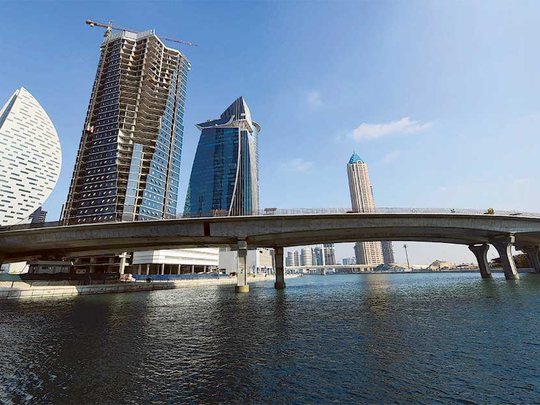
Dubai: Dubai is the sole Middle East city to make it to the most-coveted list of destinations for luxury property investors in the latest rankings from Knight Frank. Clearly, the market corrections the local property market has experienced since mid-2014 has not led the wealthy to seek options elsewhere.
Dubai placed 16th, just behind Seoul and Taipei and ahead of Geneva and Zurich.
In the global listings, at the top, there was a surprise with London edging just ahead of New York with top scores for investment and connectivity. This despite the doubts that still swirl about how the real estate market there will fare when the UK formally moves out of the EU. Brexit does not seem to have dimmed investor interest.
Second-placed New York leads on both current and future wealth. The rankings were put together based on the city’s prospects for current wealth, investment, connectivity and future wealth opportunities for high networth investors.
Hong Kong, Shanghai and Los Angeles were placed third, fourth and fifth.
“The global economic powerhouses of London and New York dominate the rankings due to their well-established lead over other cities,” said Liam Bailey, Head of Global Research at Knight Frank. “However looking ahead, future wealth concentrations and investment firepower look set to be dominated by a tussle for supremacy between Asian and North American cities.”
As for Dubai, this will give some confidence to developers to keep testing investor interest with new high-end off-plan launches. Transaction gains featuring ready properties are also improving from their 2015-mid-2016 lows, with January seeing a lot of interest for Burj Khalifa and Downtown units, based on Dubai Land Department data.
And it needn’t be just residential property that will drive future investments.
“The availability of more quality investment stock — particularly in the commercial and alternative sector (education and healthcare) — is expected to drive further investments into the city,” said Dana Salbak, Associate Partner and Head of MENA Research.
The Knight Frank “Wealth Report” also finds that spending $1 million would fetch 162 square metres of high-end residential property in Dubai. A similar sum would provide only 17 square metres in Monaco, while New York gets the buyer 26 square metres and it is 30 square metres in London.
Dubai’s 162 square meters of accommodation makes it “one of the affordable cities to buy luxury residential property”.
According to Knight Frank, the ranks of the ultra-wealthy rose by 6,340 in 2016, taking the total to 193,490. It reverses a 3 per cent decline recorded in 2015 (these are people with $30 million in net assets).
“The momentum gained in wealth creation in 2016, although relatively modest, was far from being a foregone conclusion, especially given that nearly three-quarters of respondents to our Attitudes Survey highlighted political uncertainty as a significant threat to their clients’ availability to create and preserve wealth,” said Salbak.
It is not only real estate that interests the wealthy
For exhibitors at the ongoing Dubai Boat Show, this is another reason why they should be here — the ultra high networth investors in the UAE are “most likely” to own a yacht. If it is not a yacht that catches their fancy, then pedigree race horses will do.
Their Saudi counterparts, meanwhile, would prefer to spend on private jets, according to the Knight Frank Wealth Report.
“Personal enjoyment was considered the number one reason why UHNWIs collect and buy luxury assets, according to the respondents who took part in The Wealth Report Attitudes Survey this year,” said Dana Salbak, Head of Research. “Some of these objects of desire also turn out to be shrewd investments so it’s no surprise then that ‘capital appreciation’ is now the second-most-important motivating factor when making a purchase.”











